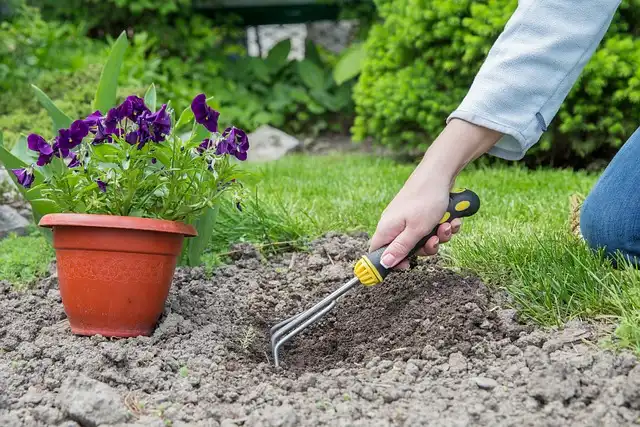Deadly Fungus Found Across the US with a 90% Fatality Rate!
- Deadly Fungus Found Across the US with a 90% Fatality Rate!
- Top 4 Breakthrough Anti-Aging Drugs that Could Extend Your Healthy Years
- Does Iron Supplementation Increase HIV Risk or Improve Brain Development?
- Immunotherapy Could Prevent Heart Attacks from Progressing to Heart Failure
- AstraZeneca Oral Weight Loss Drug: Nearly 6% Weight Reduction in 4 Weeks
- Pfizer’s Abrysvo RSV Vaccine: Expanded Approval and Key Trial Results
Deadly Fungus Found Across the US with a 90% Fatality Rate!
- Deadly Fungus Found Across the U.S. with a 90% Fatality Rate!
- Sanofi Japan Data Breach: 730000 Healthcare Professionals’ Information Exposed
- FDA has mandated a top-level black box warning for all marketed CAR-T therapies
- Can people with high blood pressure eat peanuts?
- What is the difference between dopamine and dobutamine?
- How long can the patient live after heart stent surgery?
Deadly Fungus Found Across the US with a 90% Fatality Rate!
A drug-resistant fungus with a fatality rate reaching 100% in vulnerable populations has now been detected in the U.S., especially affecting those involved in gardening, people with weakened immune systems, and those working in damp environments.

1. Drug-Resistant Fungus Spreading to the U.S.
Recently, American scientists have discovered a deadly, drug-resistant strain of Aspergillus fumigatus in common gardening soil, compost, and flower bulbs. While treatable with antifungal drugs, this strain is resistant and has already spread across Europe. Now, tests show that it has likely arrived in the U.S., posing a threat to gardeners with compromised immune systems, such as those with lung diseases or undergoing chemotherapy. When inhaled, the fungus can grow in the lungs, leading to aspergillosis, a potentially life-threatening infection.
2. Fatality Rates Up to 100%
Aspergillus fumigatus infects over 300,000 people globally each year, with a mortality rate between 30% and 90%. For those with compromised immune systems, especially those infected with resistant strains, the fatality rate can approach 100% if left untreated. Symptoms can include fever, coughing blood or mucus plugs, and worsened asthma. The Mayo Clinic warns that for immune-compromised individuals, the infection can spread rapidly from the lungs to the brain, heart, kidneys, or skin, potentially proving fatal.
Due to climate change, warmer winters and springs in the U.S. have extended the fungus’s growth season, allowing it to spread to previously unsuitable environments.
Dr. Michael Mansour, an infectious disease expert at Massachusetts General Hospital, notes that healthy immune systems can usually fend off this fungus. However, those with weakened immune systems should take extra precautions when gardening, such as wearing masks and gloves.
The National Medical Research Center’s Sarah Kidd emphasizes that fungal infections are on the rise, killing nearly 4 million people worldwide each year. The WHO has identified Aspergillus fumigatus as one of the four most severe public health threats among fungal pathogens.
3. Watch Out for Imported Flowers and Damp Environment Renovations
A University of Georgia study tested 525 samples from soil, compost, flower bulbs, and other plant products from farms across the U.S. and found 24 samples testing positive for resistant Aspergillus strains, particularly prevalent in imported flower bulbs. The study suggests that the increased use of antifungal agents in agriculture could be contributing to the rise of resistant strains, but further research is required to map its spread in the U.S.
Since Aspergillus thrives in decomposing organic matter, it is commonly found in compost and leaf piles. Gardening activities that disturb soil can release spores into the air, putting immunocompromised individuals at risk.
Dr. Marin Talbot Brewer, a professor of mycology at the University of Georgia, points out that Aspergillus is “almost everywhere” in the environment, posing a particular risk to people with chronic lung disease, recent organ transplants, or those undergoing chemotherapy. Dr. Mansour from Massachusetts General Hospital further warns that he often sees infections among patients who garden without protective gear or work on renovations in damp environments.
4. How to Test Your Home
Testing for Aspergillus at home requires specialized equipment, like air or soil sampling, followed by microscopic or molecular analysis (such as PCR). Some commercial services offer these tests, and several home mold test kits are also available, including:
(The following information is not an advertisement and is for reference only. It cannot be used as substantive advice. Please consult professionals for specific circumstances)
- MIN Mold Test Kit
- My Mold Detective Mold Test Kit
- Healthful Home Store 5-Minute Mold Test
- Mold Armor DIY Mold Test Kit
- ImmunoLytics DIY Mold Test Kit for Home
- ProLab Mold Test Kit
- Airthings 4200 House Kit
While these kits might help detect common mold, it’s recommended to consult a professional for reliable detection and health advice.
Deadly Fungus Found Across the US with a 90% Fatality Rate!
References:
- https://www.dailymail.co.uk/sciencetech/article-13739265/Scientists-sound-alarm-fungus-90-deadly-groups-lurking-backyards-America.html
- https://www.dailymail.co.uk/sciencetech/article-13146609/lab-killer-fungi-weapons-pandemic.html
- https://www.dailymail.co.uk/health/article-13066963/Frightening-maps-deadly-fungal-diseases-surging-Michigan-woman-reveals-lung-destroying-strain-killed-TWO-relatives.html
(source:internet, reference only)
Disclaimer of medicaltrend.org
Important Note: The information provided is for informational purposes only and should not be considered as medical advice.



